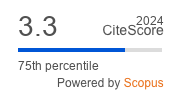Article | Open Access
Multilingualism and Social Inclusion in Scotland: Language Options and Ligatures of the “1+2 Language Approach”
| Views: | 9931 | | | Downloads: | 7423 |
Abstract: Recent global trends in migration, trade and overall mobility have continued to transform our objective realities and subjective experiences around linguistic diversity. More broadly, in many countries, the politics of multilingualism seem to have changed the old links between language and nation-state. In this context, Scotland is studied in this article as a case study as it acts to dispel the myth of a ‘monolingual country.’ Its recent language policy, the “1+2 Language Approach” (Scottish Government, 2012b), including regional languages, modern foreign languages and heritage languages of migrants have created opportunities as well as imbalances and issues of equity in the Scottish language habitus. Drawing on Kraus’s work (2018), this article demonstrates how the policy creates language as ‘options’ and as ‘ligatures.’ However, these ‘options’ and ‘ligatures’ are not salient and straightforward. The policy is explored on three different levels: (1) on its potential for allowing the development of multilingual communication strategies such as intercomprehension, code-switching and mixing, (2) on its commitment to linguistic justice avoiding language hierarchies and (3) on its links with dominating, neoliberal approaches to education and the economy. The article finally concludes that options and ligatures visible in language policy impose some semantic order on the confusion of layered co-occurrences of various hegemonies, or the general strain between macro and micro distinction.
Keywords: 1+2 language approach; language policy; multilingualism; options and ligatures; Scotland; social inclusion
Published:
© Argyro Kanaki. This is an open access article distributed under the terms of the Creative Commons Attribution 4.0 license (http://creativecommons.org/licenses/by/4.0), which permits any use, distribution, and reproduction of the work without further permission provided the original author(s) and source are credited.


